Browse Books
A complete detailed listing of all publications currently offered by IMO Publishing. Titles are also grouped alphabetically, by topic, publication date and language.
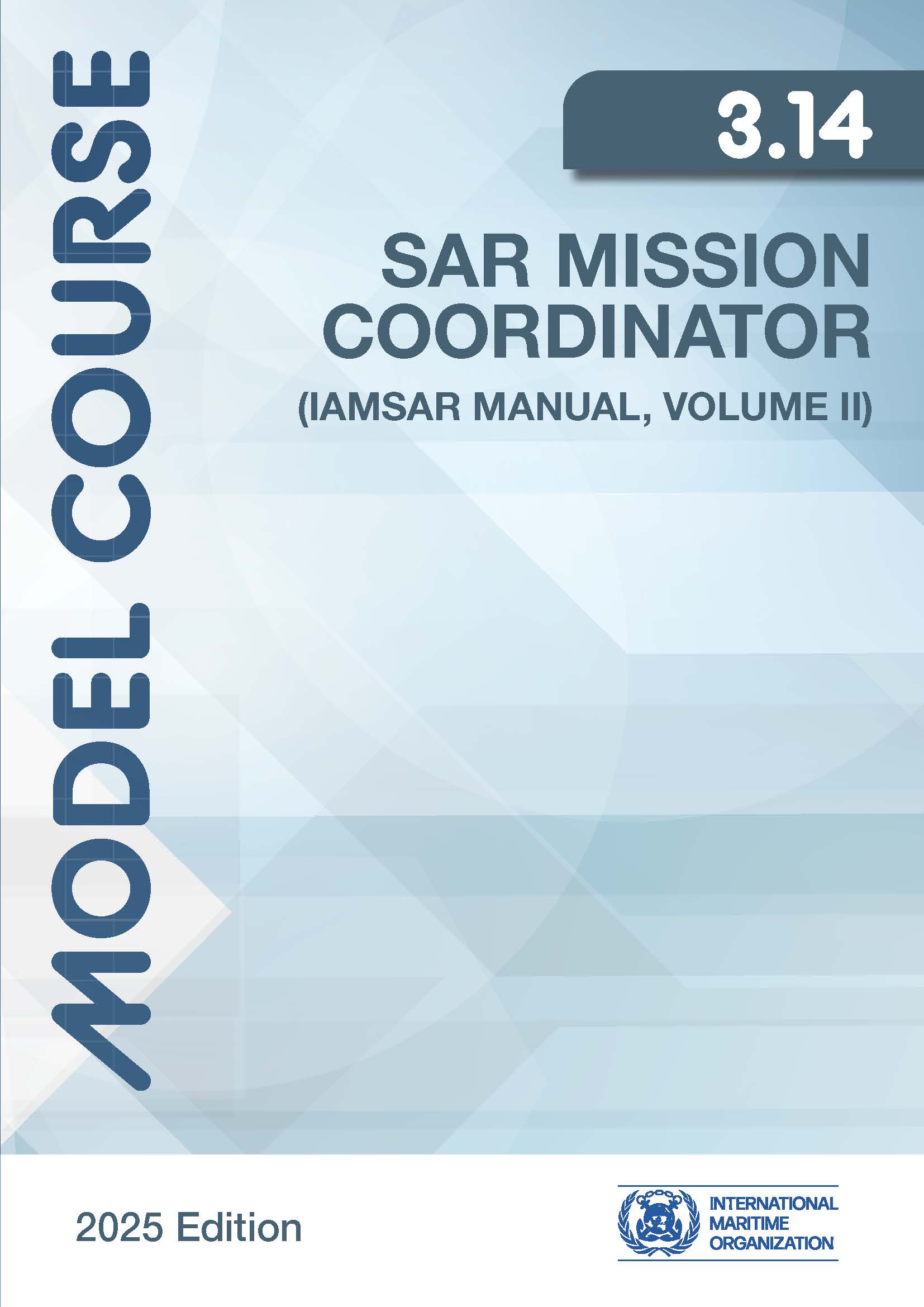
SAR Mission Coordinator (IAMSAR Manual, Volume II)
Model course 3.14
This course aims to support training in search and rescue (SAR) mission coordination in accordance with the International Convention for the Safety of Life at Sea (SOLAS) and the International Convention on Maritime Search and Rescue 1979 (SAR Convention). Based on Volume II of the International Aeronautical and Maritime Search and Rescue Manual (IAMSAR Manual) it provides guidance on the coordination and conduct of maritime SAR activities ensuring alignment with internationally recognized standards and procedures.
This is one of three model courses developed from the IAMSAR Manual alongside Model Course 3.13 (SAR Administration Volume I) and Model Course 3.15 (SAR On-scene Coordinator Volume III). Each course is designed as a standalone resource and together they provide a comprehensive approach for assisting States in meeting their own SAR needs and the obligations they accepted under SOLAS and the SAR Convention. Tailored to the trainees’ experience this course is a key tool for strengthening SAR capability and enhancing safety at sea.
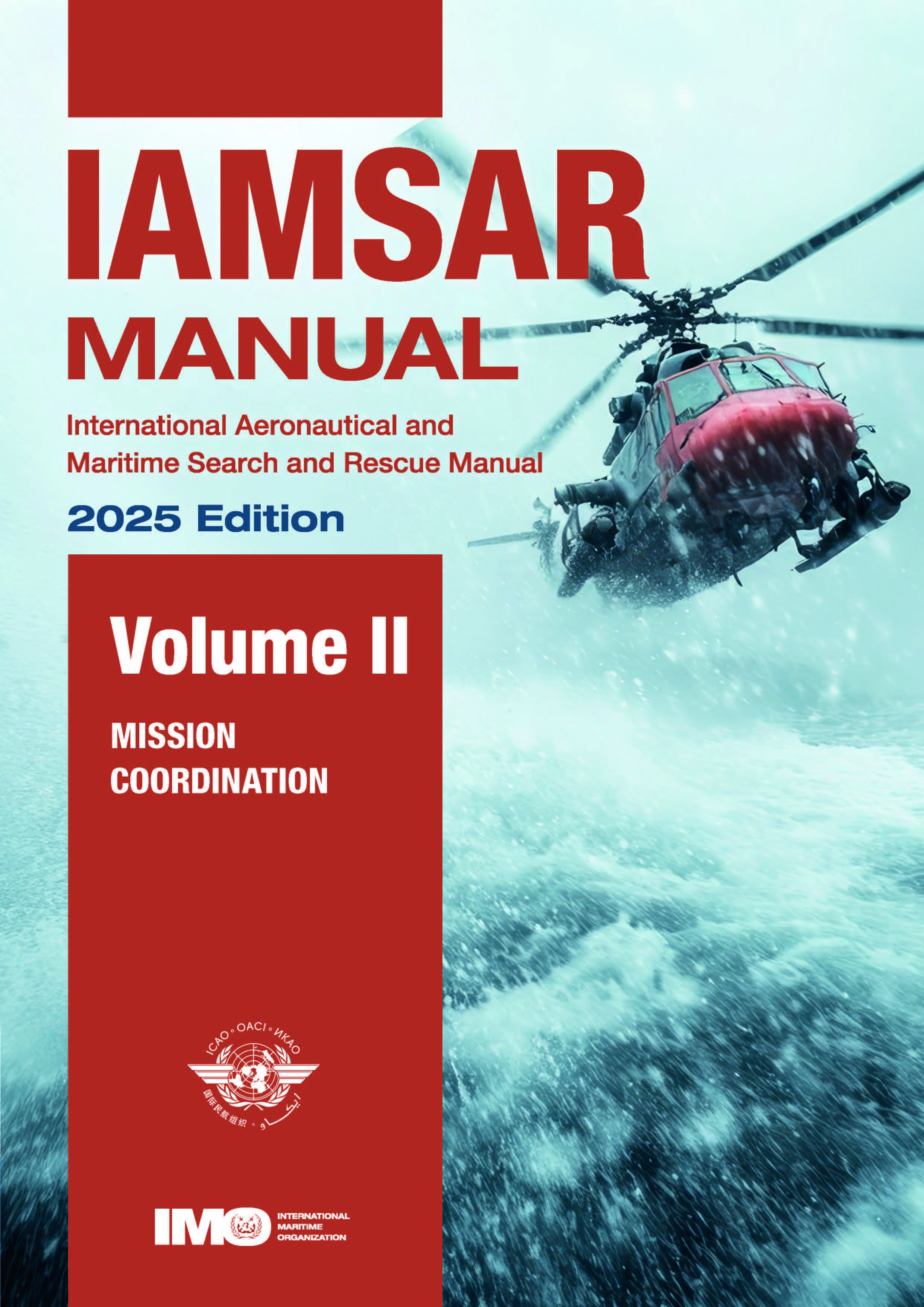
IAMSAR Manual, Volume II – Mission Coordination
International Aeronautical and Maritime Search and Rescue Manual, Volume II
The Mission Coordination volume assists personnel who plan and coordinate SAR operations and exercises.
A new edition of the IAMSAR Manual is published every three years. The 2025 edition includes amendments adopted by the International Civil Aviation Organization (ICAO) and approved by the Maritime Safety Committee of the International Maritime Organization (IMO) at its 109th session in December 2024 by means of MSC.1/Circ.1686 which become applicable on 1 January 2026.
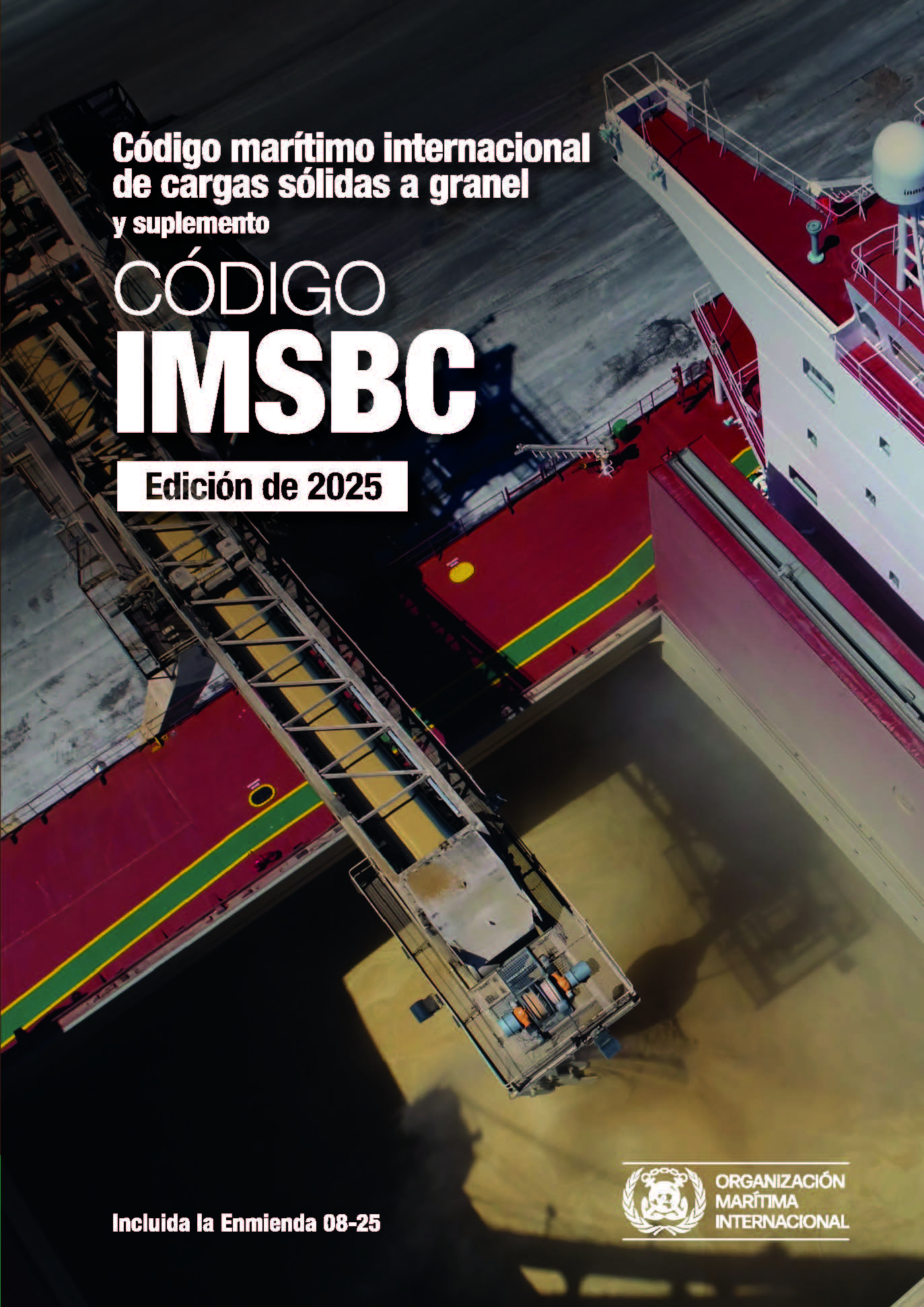
Código IMSBC
Código marítimo internacional de cargas sólidas a granel y suplemento
El Código marítimo internacional de cargas sólidas a granel (Código IMSBC) adoptado el 4 de diciembre de 2008 mediante la resolución MSC.268(85) entró en vigor el 1 de enero de 2011 fecha a partir de la cual adquirió carácter obligatorio en virtud de las disposiciones del Convenio internacional para la seguridad de la vida humana en el mar 1974 (Convenio SOLAS). La presente edición incluye la Enmienda 08-25 que se puede aplicar con carácter voluntario a partir del 1 de enero de 2026 en espera de su entrada en vigor oficial prevista para el 1 de enero de 2027.
La presente publicación contiene asimismo información adicional que complementa al Código IMSBC como por ejemplo el Código de prácticas para la seguridad de las operaciones de carga y descarga de graneleros (Código BLU) incluido el Manual de embarque y desembarque de cargas sólidas a granel para representantes de terminales (Manual BLU) y las Recomendaciones sobre la utilización sin riesgos de plaguicidas en los buques aplicables a la fumigación de las bodegas de carga. Se recomienda el Código IMSBC y su suplemento a las Administraciones propietarios de buques expedidores y capitanes y a todas las demás partes interesadas en las normas que hay que aplicar a la estiba y expedición de cargas sólidas a granel en condiciones de seguridad excluido el grano.
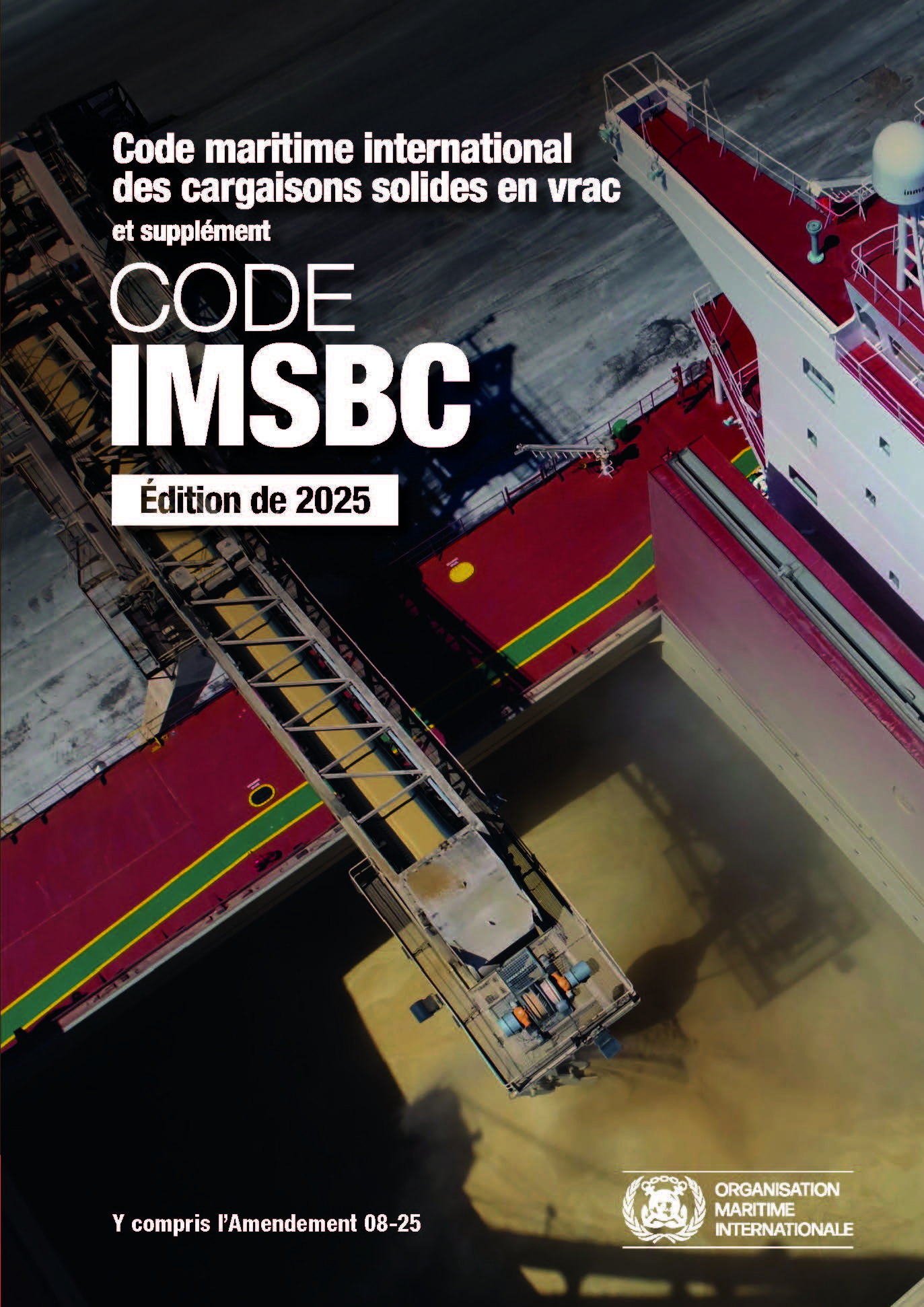
Code IMSBC
Code maritime international des cargaisons solides en vrac et supplément
Le Code maritime international des cargaisons solides en vrac (Code IMSBC) adopté le 4 décembre 2008 par la résolution MSC.268(85) est entré en vigueur le 1er janvier 2011 date à laquelle il est devenu obligatoire en vertu des dispositions de la Convention internationale de 1974 pour la sauvegarde de la vie humaine en mer (Convention SOLAS). La présente édition incorpore l’Amendement 08-25 et peut être mis en application à partir du 1er janvier 2026 à titre facultatif en attendant son entrée en vigueur officielle le 1er janvier 2027.
La présente publication fournit des éléments supplémentaires d’information visant à compléter le Code IMSBC tels que le Recueil de règles pratiques pour la sécurité du chargement et du déchargement des vraquiers (Recueil BLU) y compris le Manuel sur le chargement et le déchargement des cargaisons solides en vrac à l’intention des représentants des terminaux (Manuel BLU) et les Recommandations sur l’utilisation des pesticides à bord des navires applicables à la fumigation des cales à cargaison. Le Code IMSBC et supplément est recommandé aux Administrations propriétaires de navires expéditeurs et capitaines ainsi qu’à toute autre partie concernée par les normes applicables à l’arrimage et au transport en toute sécurité des cargaisons solids en vrac à l’exclusion des grains.
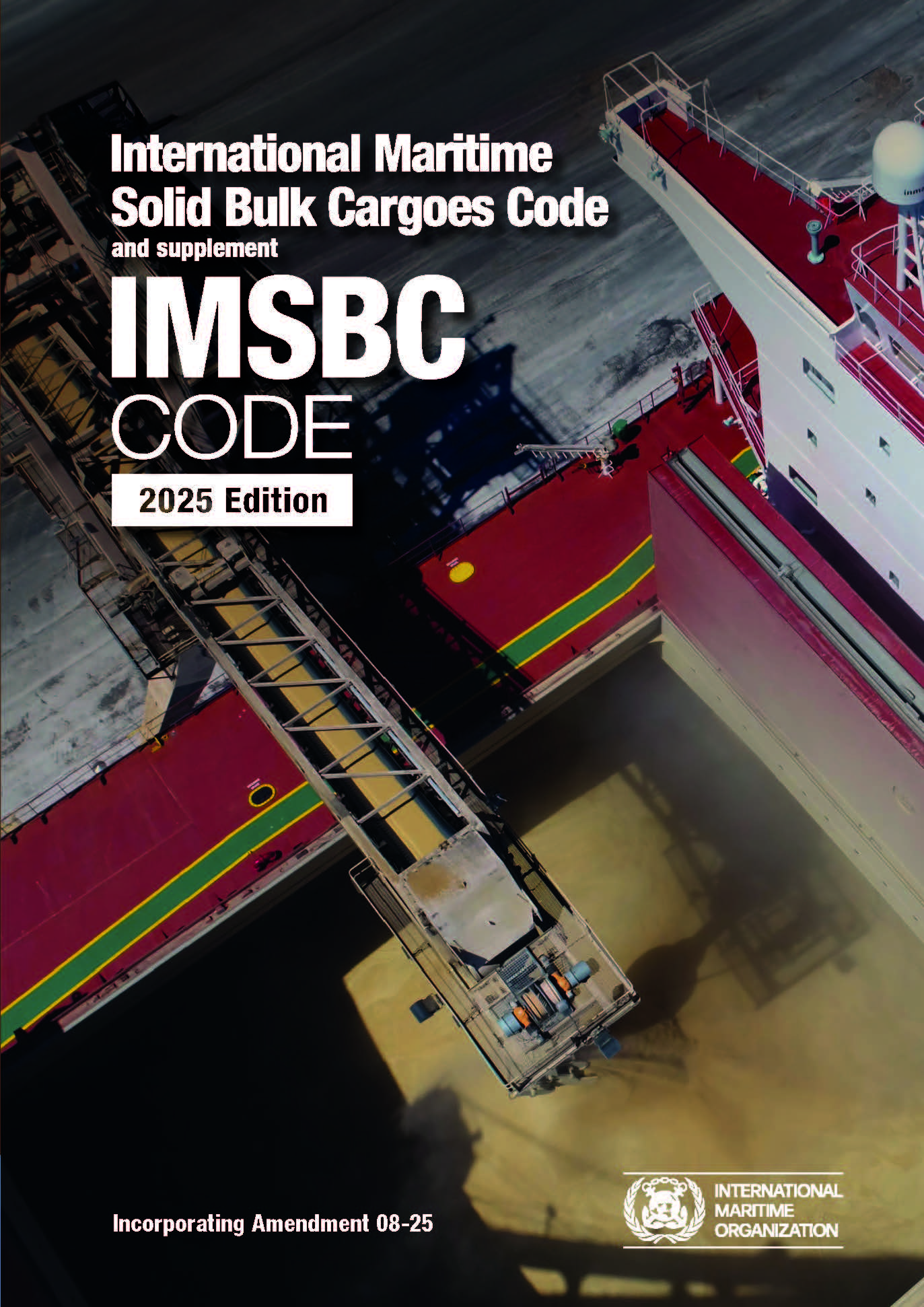
IMSBC Code
International Maritime Solid Bulk Cargoes Code and supplement
The International Maritime Solid Bulk Cargoes Code (IMSBC Code) adopted on 4 December 2008 by resolution MSC.268(85) entered into force on 1 January 2011 from which date it was made mandatory under the provisions of the SOLAS Convention. The present edition incorporates Amendment 08-25 which may be applied from 1 January 2026 on a voluntary basis anticipating its envisaged official entry into force on 1 January 2027.
This publication also presents additional information that supplements the IMSBC Code such as the Code of Practice for the Safe Loading and Unloading of Bulk Carriers (BLU Code) BLU Manual and recommendations on the safe use of pesticides in ships applicable to the fumigation of cargo holds. The IMSBC Code and supplement is commended to Administrations shipowners shippers and masters and all others concerned with the standards to be applied in the safe stowage and shipment of solid bulk cargoes excluding grain.
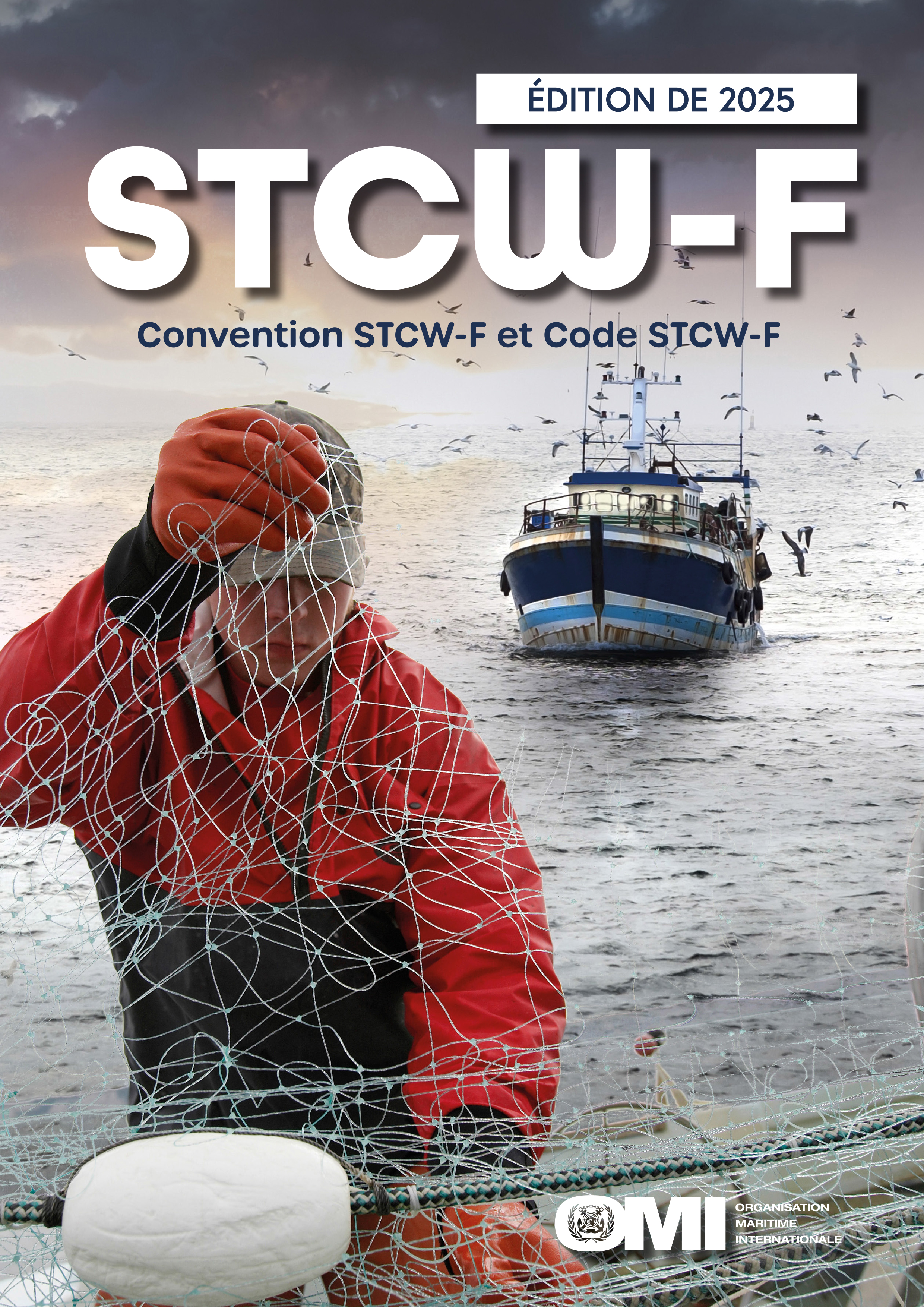
STCW-F
Convention STCW-F et Code STCW-F
En cliquant sur le bouton « Read » de cette page vous accéderez au PDF du livre complet. Pour accéder à la version en texte intégral et aux PDF des chapitres individuels cliquez sur l’onglet « Chapters » et sélectionnez le chapitre que vous souhaitez lire.
La présente publication contient la Convention internationale de 1995 sur les normes de formation du personnel des navires de pêche de délivrance des brevets et de veille (Convention STCW-F) y compris les amendements qui entrent en vigueur le 1er janvier 2026 et introduit le nouveau Code des normes de formation du personnel des navires de pêche de délivrance des brevets et de veille (Code STCW-F).
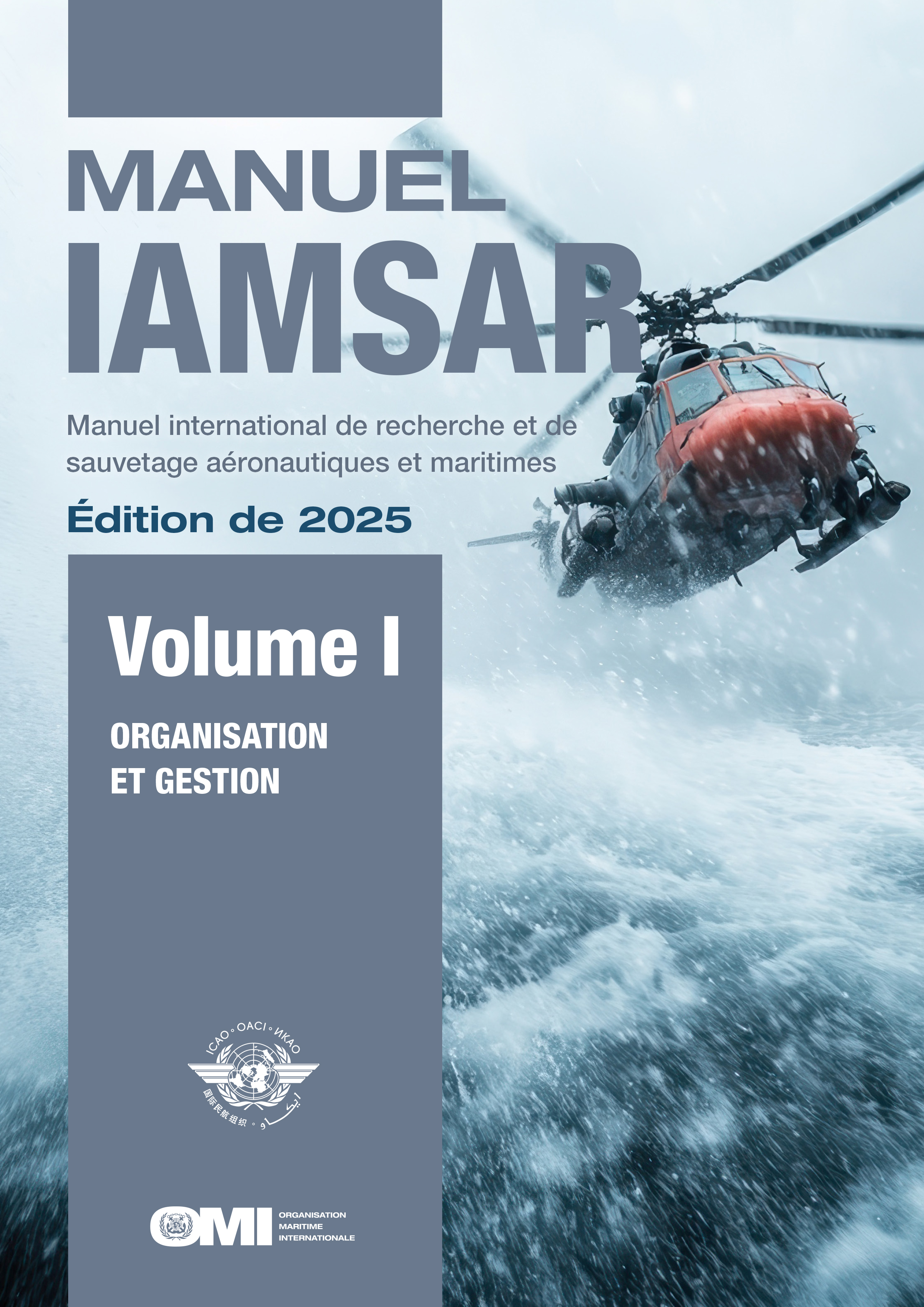
Manuel IAMSAR, Volume I – Organisation et gestion
Manuel international de recherche et de sauvetage aéronautiques et maritimes, Volume I
En cliquant sur le bouton « Read » de cette page vous accéderez au PDF de l’intégralité du livre. Pour accéder à la version en texte intégral et aux PDF des chapitres individuels cliquez sur l’onglet « Chapters » et sélectionnez le chapitre que vous souhaitez lire.
Le volume intitulé Organisation et gestion porte sur le concept du dispositif SAR mondial sur l’établissement et l’amélioration de dispositifs SAR nationaux et régionaux et sur la coopération avec les États voisins en vue de mettre en œuvre des services SAR efficaces et économiques.
L'édition de 2025 contient les amendements approuvés par l'Organisation de l'aviation civile (OACI) et par le Comité de la sécurité maritime (MSC) de l'Organisation maritime internationale (OMI) à sa cent neuvième session en décembre 2024 par la circulaire MSC.1/Circ.1686 qui entreront en vigueur le 1er janvier 2026.
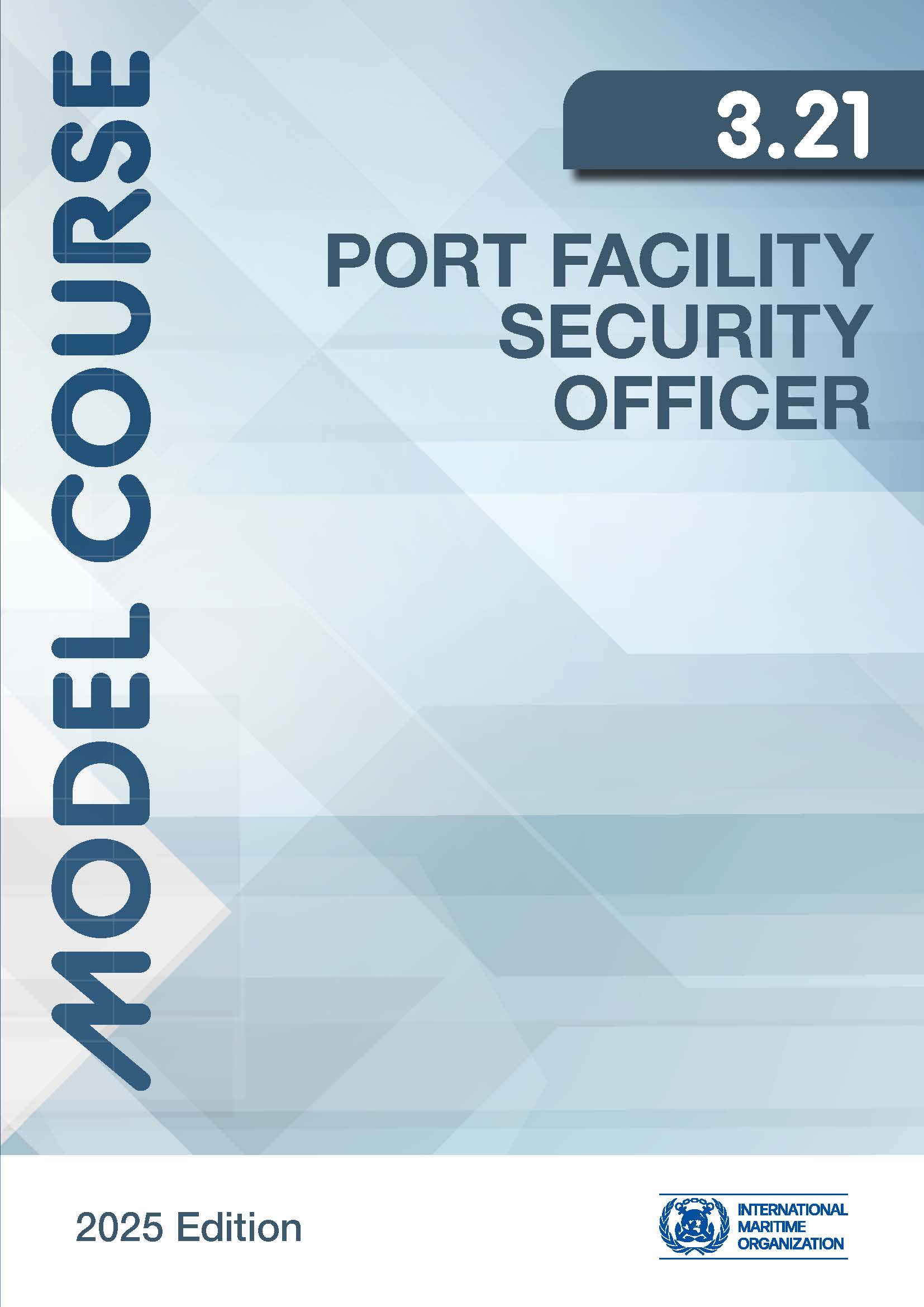
Port Facility Security Officer
Model Course 3.21
This course aims to facilitate the training of port facility security officers in accordance with the minimum knowledge understanding and proficiencies (KUPs) in the Guidelines on training and certification for port facility security officers (MSC.1/Circ.1188) to meet the duties and responsibilities required by the International Ship and Port Facility Security (ISPS) Code part A.
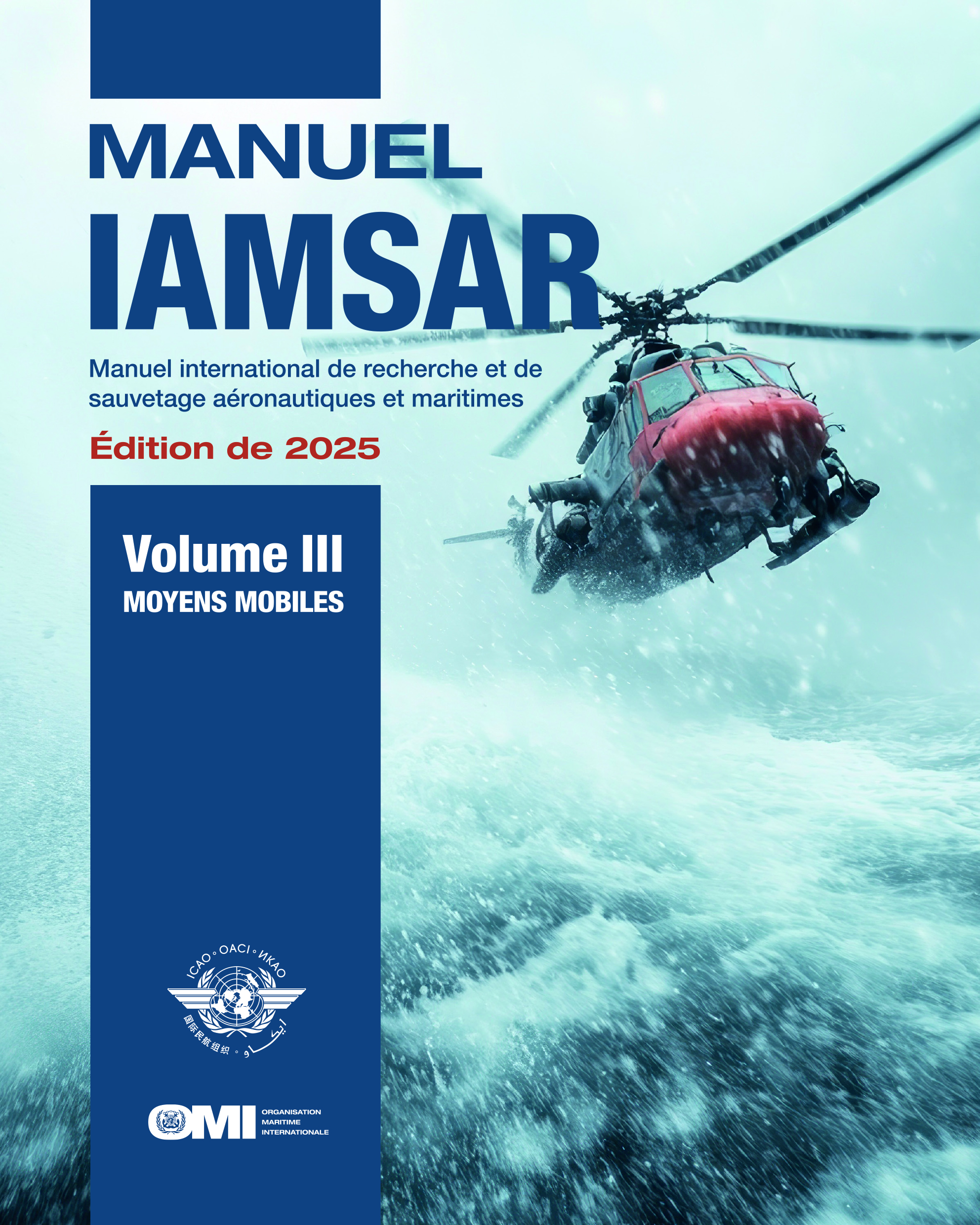
Manuel IAMSAR, Volume III – Moyens mobiles
Manuel international de recherche et de sauvetage aéronautiques et maritimes, Volume III
En cliquant sur le bouton « Lire » de cette page vous accéderez au PDF du livre complet. Pour accéder à la version en texte intégral et aux PDF des chapitres individuels cliquez sur l’onglet « Chapitres » et sélectionnez le chapitre que vous souhaitez lire.
Le volume intitulé Moyens mobiles est destiné à être emporté à bord des unités de recherche des aéronefs et des navires pour aider à l’exécution d’une recherche d’un sauvetage ou d’une fonction de coordination sur place ainsi que dans des aspects SAR qui concernent leurs propres situations d’urgence.
Une nouvelle édition est publiée tous les trois ans. L’édition de 2025 contient les amendements approuvés par l’Organisation de l’aviation civile (OACI) et par le Comité de la sécurité maritime (MSC) de l’Organisation maritime internationale (OMI) à sa cent neuvième session en décembre 2024 par la circulaire MSC.1/Circ.1686 qui entrent en vigueur le 1er janvier 2026.
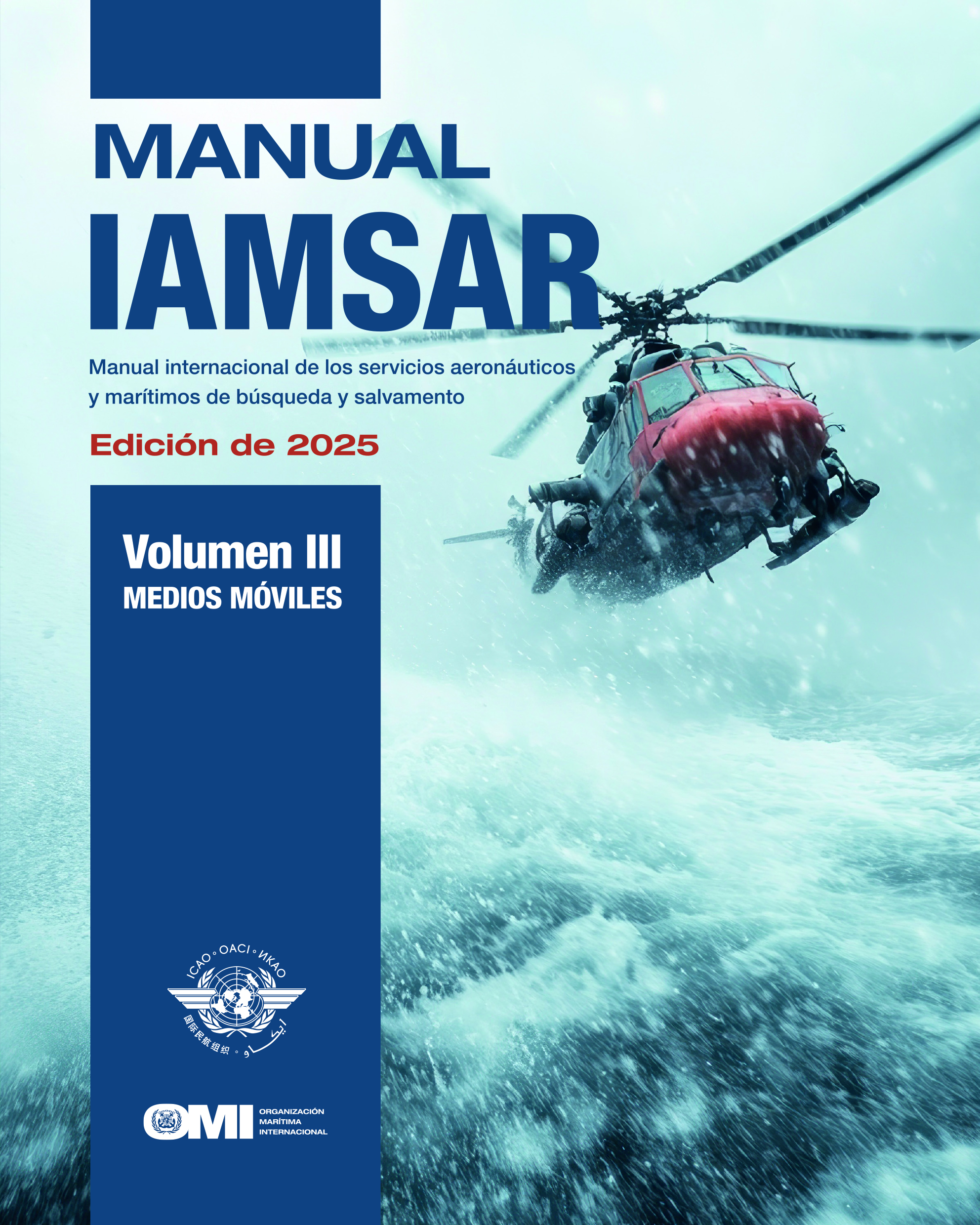
Manual IAMSAR, Volumen III – Medios Móviles
Manual internacional de los servicios aeronáuticos y marítimos de búsqueda y salvamento, Volumen III
Al hacer clic en el botón “Read” en esta página accederá al PDF del libro completo. Para acceder a la versión de texto completo y a los PDF de los capítulos individuales haga clic en la pestaña “Chapters” y seleccione el capítulo que desea leer.
El presente volumen titulado Medios móviles se ha elaborado para ser llevado a bordo de las unidades de salvamento las aeronaves y los buques con el propósito de asistir a estos en las operaciones de búsqueda o salvamento o en sus funciones de coordinación en el lugar del siniestro así como en los aspectos de la búsqueda y el salvamento relacionados con sus propias situaciones de emergencia.
Se publica una nueva edición del Manual IAMSAR cada tres años. La edición de 2025 incluye las enmiendas aprobadas por la Organización de Aviación Civil Internacional (OACI) y el Comité de Seguridad Marítima (MSC) de la Organización Marítima Internacional (OMI) en su 109° periodo de sesiones (diciembre de 2024) mediante la circular MSC.1/Circ.1686 que entran en vigor el 1 de enero de 2026.
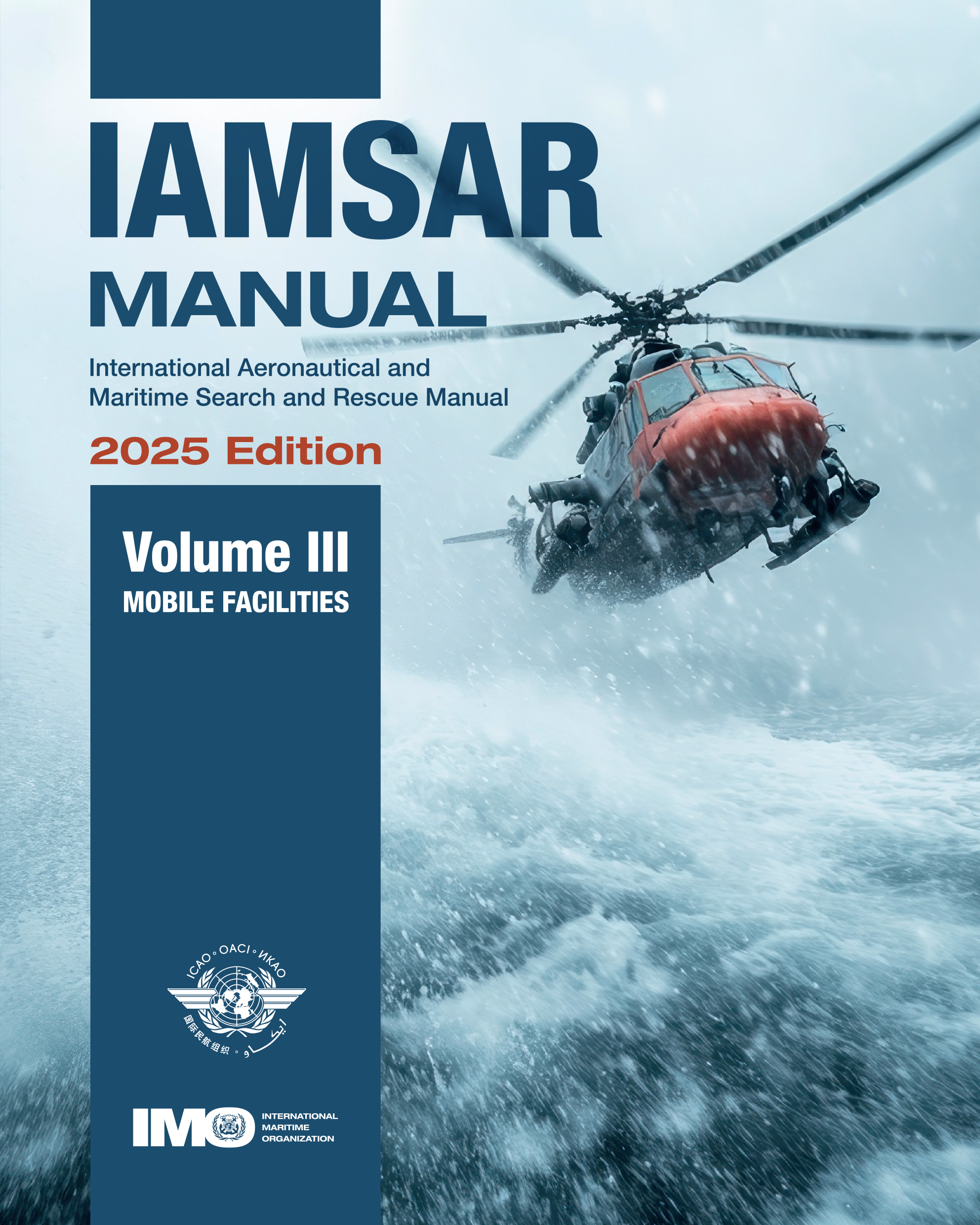
IAMSAR Manual, Volume III – Mobile Facilities
International Aeronautical and Maritime Search and Rescue Manual, Volume III
By clicking on the “Read” button on this page you will be accessing the PDF of the full book. To access the Full-Text version and PDFs of the individual chapters click on the “Chapters” tab and select the chapter you would like to read.
The Mobile Facilities volume is intended to be carried on board rescue units aircraft and vessels to help with the performance of a search rescue or on-scene coordinator function and with aspects of search and rescue that pertain to their own emergencies.
A new edition of the IAMSAR Manual is published every three years. The 2025 edition includes amendments adopted by the International Civil Aviation Organization (ICAO) and approved by the Maritime Safety Committee of the International Maritime Organization (IMO) at its 109th session in December 2024 by means of MSC.1/Circ.1686 which become applicable on 1 January 2026.
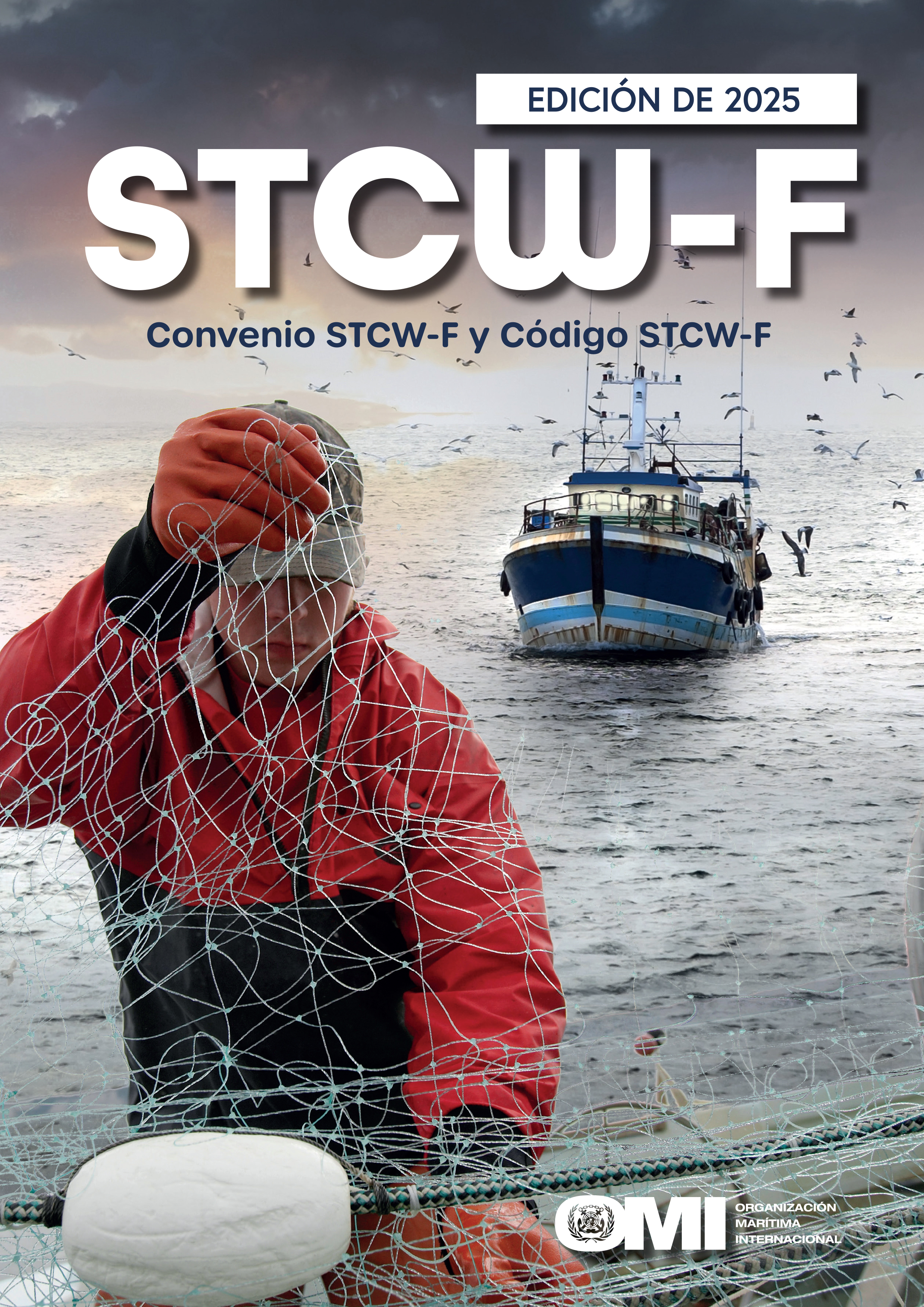
STCW-F
Convenio STCW-F y Código STCW-F
Al hacer clic en el botón “Read” en esta página accederá al PDF del libro completo. Para acceder a la versión de texto completo y a los PDF de los capítulos individuales haga clic en la pestaña “Chapters” y seleccione el capítulo que desea leer.
La presente publicación contiene el Convenio internacional sobre normas de formación titulación y guardia para el personal de los buques pesqueros 1995 (Convenio STCW-F) incluidas las enmiendas que entran en vigor el 1 de enero de 2026 y el Código sobre normas de formación titulación y guardia para el personal de los buques pesqueros (Código STCW-F).
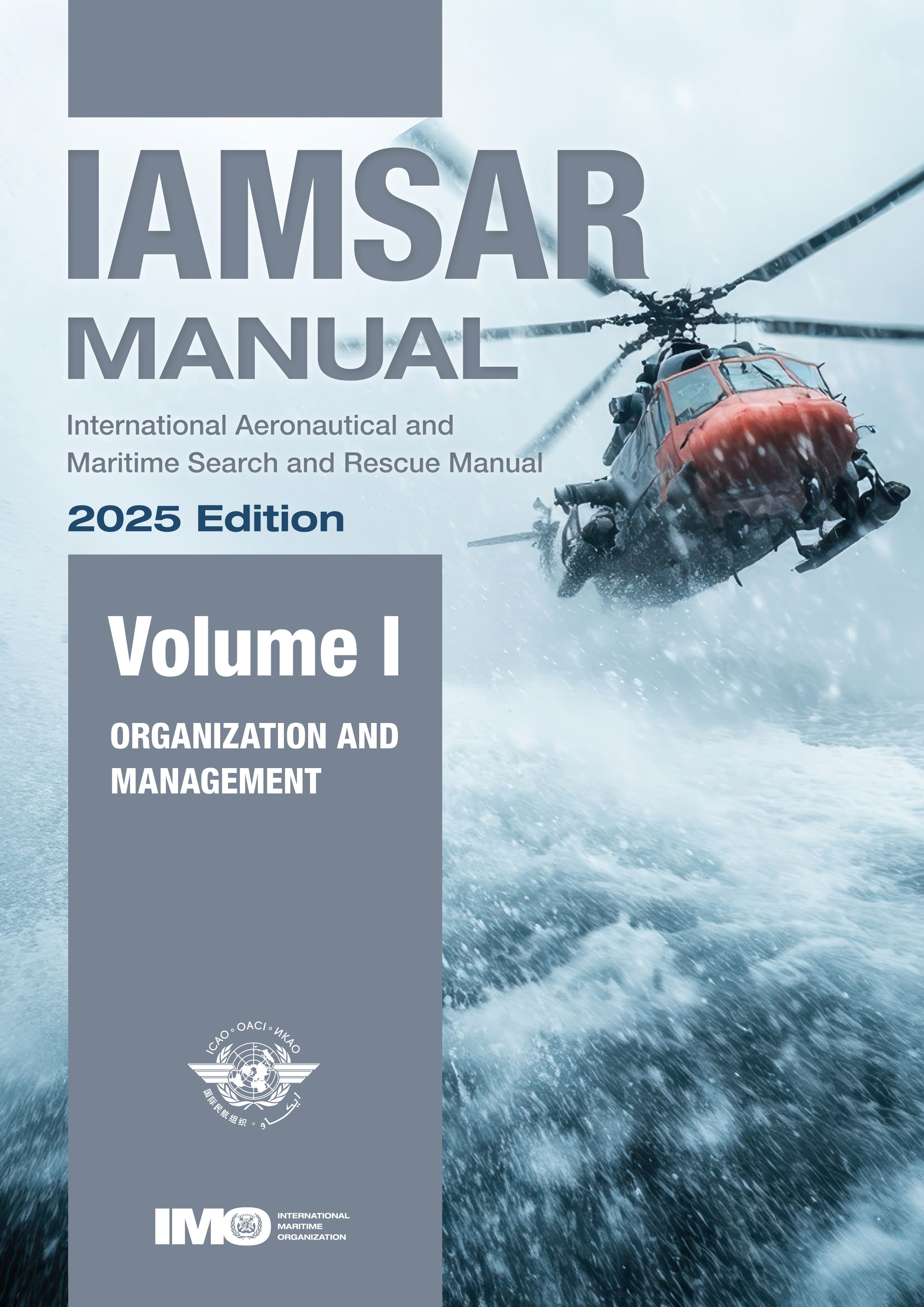
IAMSAR Manual, Volume I – Organization and Management
International Aeronautical and Maritime Search and Rescue Manual, Volume I
By clicking on the "Read" button on this page you will be accessing the PDF of the full book. To access the Full-Text version and PDFs of the individual chapters click on the “Chapters” tab and select the chapter you would like to read.
The Organization and Management volume discusses the global search and rescue (SAR) system concept establishment and improvement of national and regional SAR systems and cooperation with neighbouring States to provide effective and economical SAR services.
A new edition of the IAMSAR Manual is published every three years. The 2025 edition includes amendments adopted by the International Civil Aviation Organization (ICAO) and approved by the Maritime Safety Committee of the International Maritime Organization (IMO) at its 109th session in December 2024 by means of MSC.1/Circ.1686 which become applicable on 1 January 2026.

Ships’ Routeing
By clicking on the "Read" button on this page you will be accessing the PDF of the full book. To access the Full-Text version and PDFs of the individual chapters click on the “Chapters” tab and select the chapter you would like to read.
Both the safety of shipping and the cleanliness of oceans are promoted in many ways one of which is the continuing development of routeing measures to organize the navigation of vessels and to monitor their progress. This publication presents individual descriptions of the following routeing measures:
- traffic separation schemes and inshore
- traffic zones
- deep-water routes
- areas to be avoided
- no anchoring areas
- other routeing measures such as recommended tracks two-way routes and recommended directions of traffic flow associated rules and recommendations on navigation
- archipelagic sea lanes
- ship reporting systems
This edition incorporates routeing measures that have been adopted before September 2025.
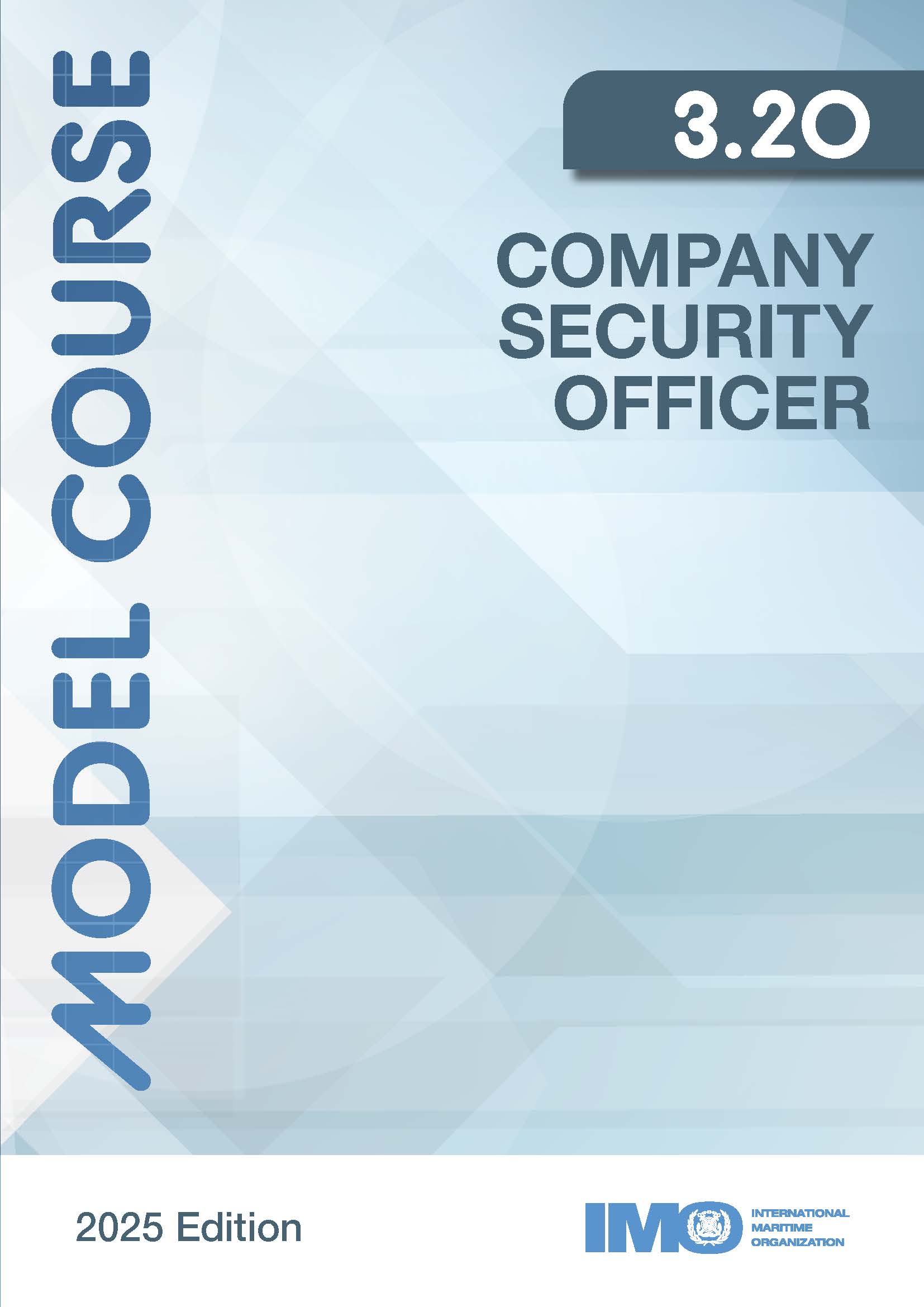
Company Security Officer
Model Course 3.20
This course aims to facilitate the training for company security officers so they can meet the mandatory minimum standards of competence in training and certification in accordance with Guidelines on training and certification for company security officers (MSC.1/Circ.1154) and the ISPS Code Part A.

Manual IAMSAR, Volumen I – Organización y gestión
Manual internacional de los servicios aeronáuticos y marítimos de búsqueda y salvamento, Volumen I
Al hacer clic en el botón “Read” en esta página accederá al PDF del libro completo. Para acceder a la versión de texto completo y a los PDF de los capítulos individuales haga clic en la pestaña “Chapters” y seleccione el capítulo que desea leer.
El presente volumen titulado Organización y gestión examina el concepto del sistema de búsqueda y salvamento (sistema SAR) mundial el establecimiento y la mejora de sistemas SAR nacionales y regionales y la colaboración entre los Estados vecinos encaminada a prestar unos servicios SAR eficaces y económicos.
Se publica una nueva edición del Manual IAMSAR cada tres años. La edición de 2025 incluye las enmiendas aprobadas por la Organización de Aviación Civil Internacional (OACI) y el Comité de Seguridad Marítima (MSC) de la Organización Marítima Internacional (OMI) en su 109º periodo de sesiones (diciembre de 2024) mediante la circular MSC.1/Circ.1686 que entran en vigor el 1 de enero de 2026..
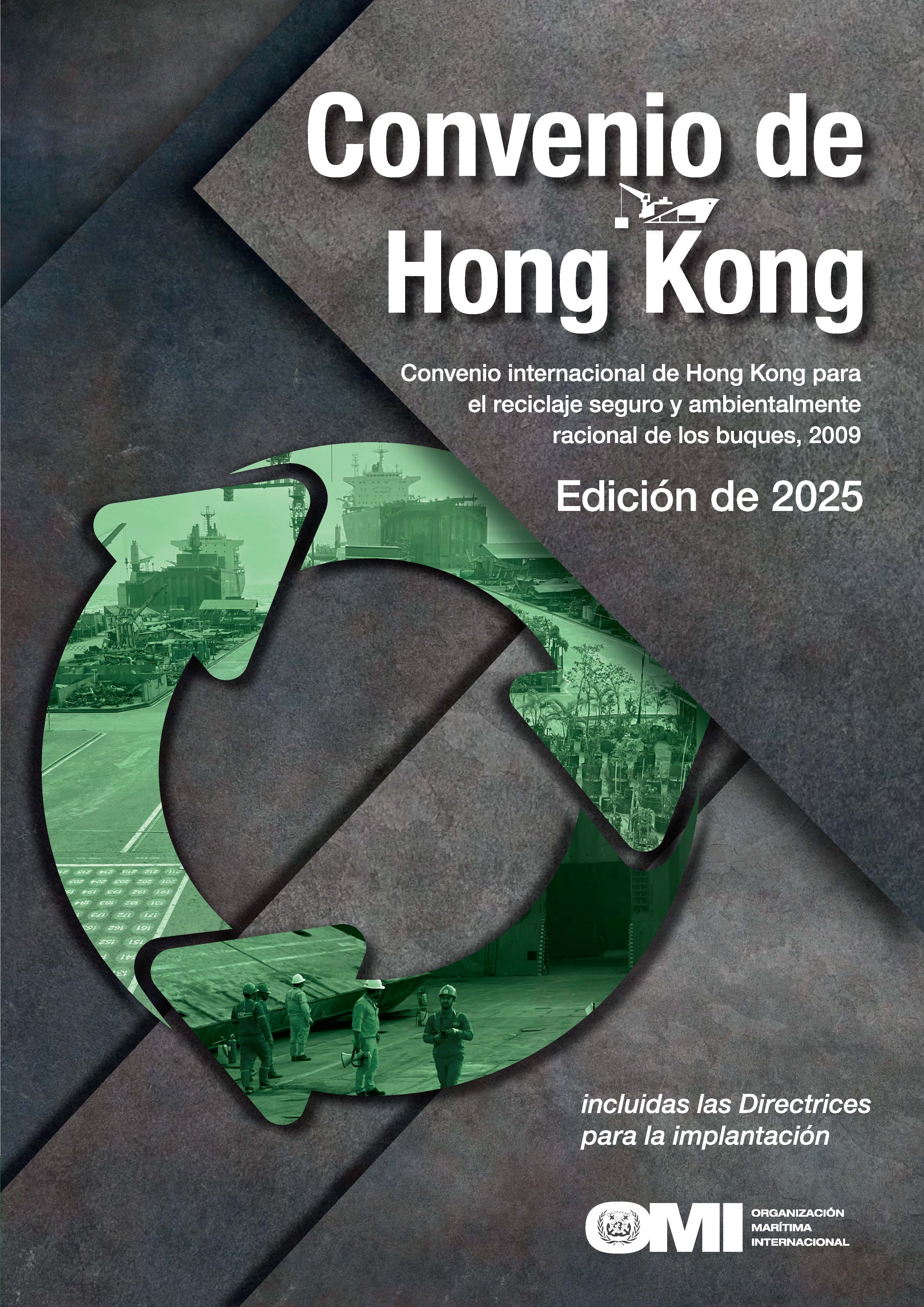
Convenio de Hong Kong
Convenio internacional de Hong Kong para el reciclaje seguro y ambientalmente racional de los buques, 2009, y las directrices para su implantación
La presente publicación contiene:
- el Convenio internacional de Hong Kong para el reciclaje seguro y ambientalmente racional de los buques 2009 que entra en vigor el 26 de junio de 2025;
- seis resoluciones adoptadas en la Conferencia internacional sobre el reciclaje seguro y ambientalmente racional de los buques celebrada en Hong Kong (China) del 11 al 15 de mayo de 2009;
- seis directrices para la implantación uniforme del Convenio elaboradas y adoptadas por el Comité de Protección del Medio Marino de la OMI; e
- instrumentos adicionales para la implantación del Convenio de Hong Kong.
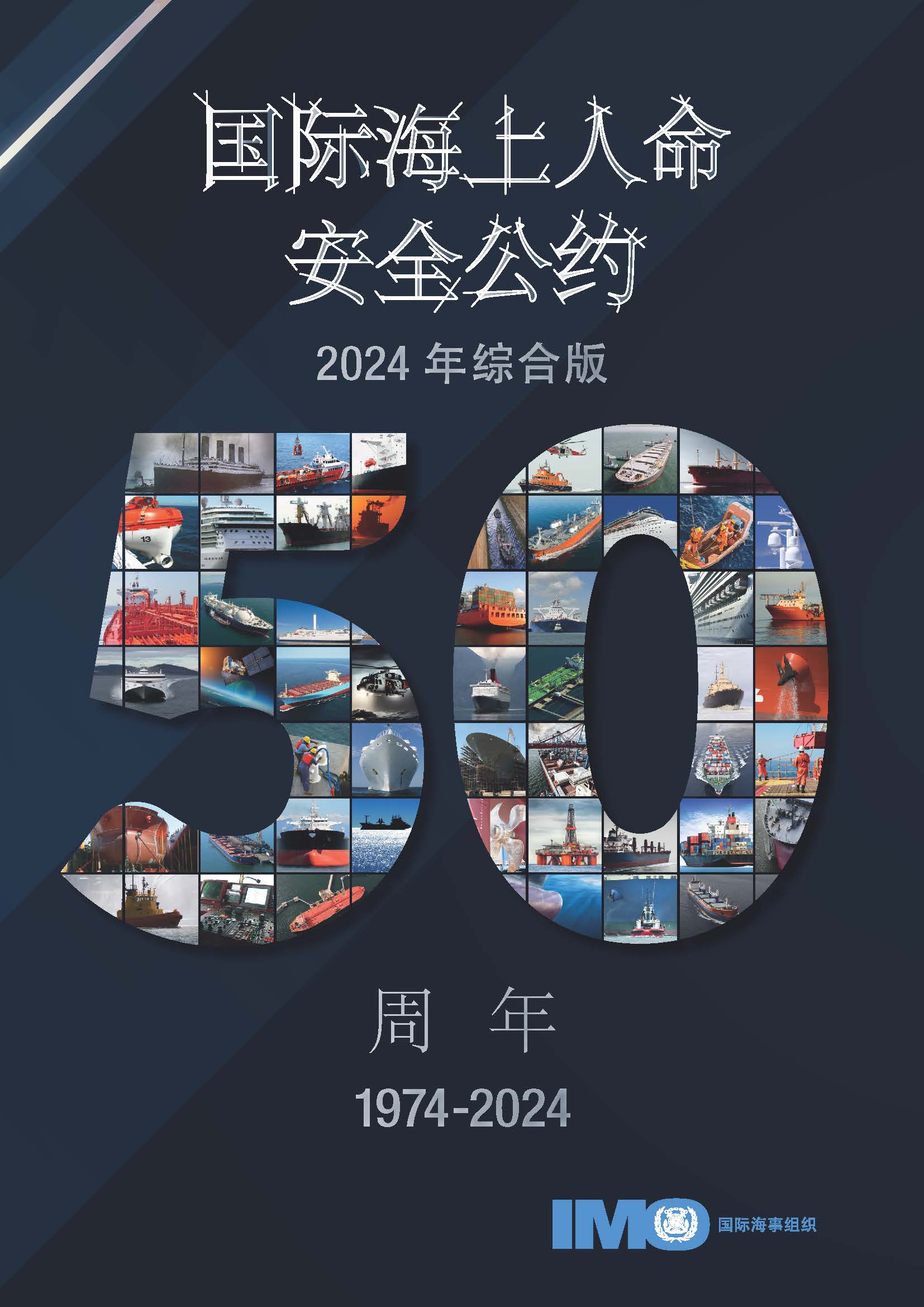
国际海上人命安全公约
2024 年综合版
在所有涉及海上安全的国际公约中,最重要的当属《国际海上人命安全公约》(简称《安全公约》),该公约涵盖了一系列旨在提升航运安全的措施。
该公约也是同类公约中历史最悠久的公约之一:首个版本于1914年泰坦尼克号沉没、造成1500多人丧生后通过。此后,《安全公约》又经历了四次修订。现行版本于1974年通过,并于1980年生效。本出版物旨在纪念《1974年安全公约》通过50周年,该公约是一份重要的国际海上安全文书。
本出版物收录了该公约、其《1988年议定书》以及2024年7月1日或之前生效的所有修正案的综合文本。此外,本版本还收录了海上安全委员会批准的《安全公约》规则的统一解释。
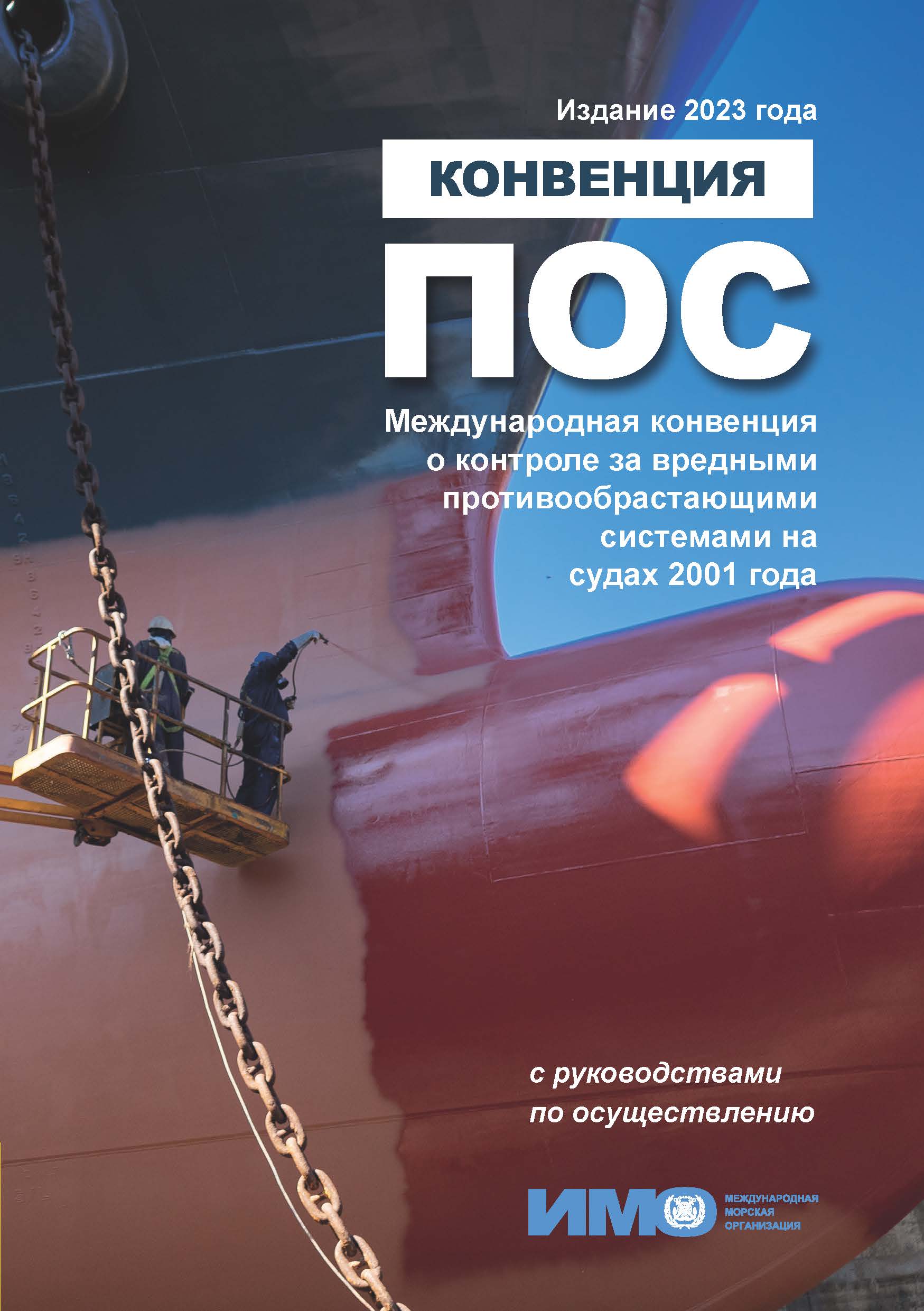
Конвенция ПОС
Международная конвенция о контроле за вредными противообрастающими системами на судах 2001 года
Противообрастающие системы — это покрытия средства обработки или устройства которые предохраняют корпуса судов от прикрепления нежелательных организмов.
В свете признания необходимости контролировать воздействие на окружающую среду вредных веществ применяемых в противообрастающих системах в 2001 году Международная морская организация приняла Международную конвенцию о контроле за вредными противообрастающими системами на судах 2001 года (Конвенция ПОС) которая действует начиная с 2008 года.
Настоящее третье издание Конвенции ПОС содержит обновленный текст Конвенции ПОС включая поправки к приложениям 1 и 4 касающиеся введения мер контроля в отношении цибутрина и другие вытекающие из них поправки которые вступили в силу 1 января 2023 года а также пересмотренные руководства способствующие осуществлению Конвенции с внесенными в нее поправками.

STCW-F
STCW-F Convention and STCW-F Code
By clicking on the “Read” button on this page you will be accessing the PDF of the full book. To access the Full-Text version and PDFs of the individual chapters click on the “Chapters” tab and select the chapter you would like to read.
This publication contains the International Convention on Standards of Training Certification and Watchkeeping for Fishing Vessel Personnel 1995 including amendments that enter into force on 1 January 2026 and introduces the new Standards of Training Certification and Watchkeeping for Fishing Vessel Personnel (STCW-F) Code.
